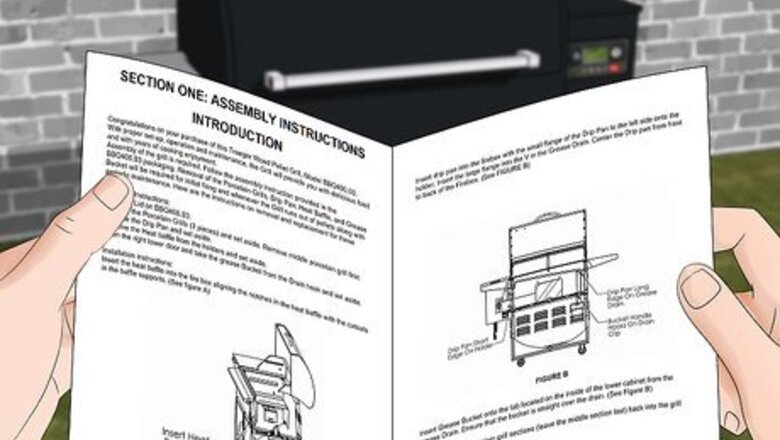
views
Getting the Grill Ready
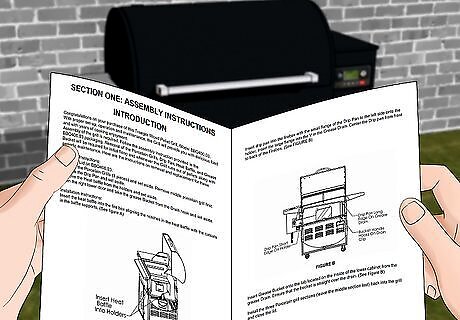
Assemble your grill if necessary. If this is your first time starting a new Traeger grill, check to make sure that it is completely assembled. For most models, this involves putting together the lower cabinet, grill body, heat baffle, grease drain pan, flue pipe, chimney cap, grill grates, and grease bucket. Every Traeger grill is different, so follow the assembly instructions listed in your owner’s manual. When igniting your grill for the first time, remove the grill grates, grease drain pan, and heat baffle. This will allow you to troubleshoot any initial start-up issues.
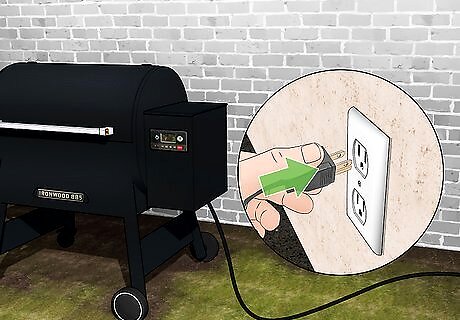
Plug your grill into an electrical outlet. Unlike traditional wood-burning grills, Traeger equipment requires power to operate the internal thermostat, fan, igniter rod, and wood pellet auger. To avoid starting the grill accidentally, leave it unplugged when not in use.

Purchase Traeger-brand wood pellets. To operate your grill, you’ll need specially designed wood pellets available for purchase from Traeger’s official website. These wood pellets come in a variety of flavors, including hickory, mesquite, apple, pecan, oak, maple, alder, and cherry, and each type of pellet will make your food taste different. For safety, only use Traeger-brand wood pellets with your grill.

Place the wood pellets inside your grill’s hopper. Locate the large metal box attached to your grill’s main body, known as the hopper. Open the lid and, if necessary, scoop out any pellets already inside the hopper or remove them by opening your grill’s hopper cleanout door. Then, fill the chamber to the top with wood pellets. You can use the same batch of wood pellets for up to 1 week.

Clean your RTD temperature probe if necessary. The RTD temperature probe is a metal prong located on the left side of your grill’s main body. Before starting up the grill, make sure the probe is free of grease, dirt, and other items that could cause it to operate incorrectly. If the prong is dirty, clean it off using a fresh rag. If your temperature probe is dirty, it may cause unwanted heat fluctuations while grilling.
Preheating Your Grill
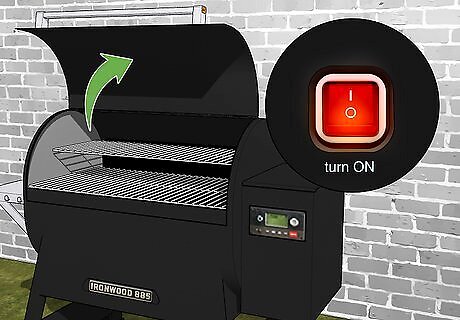
Open up the grill’s lid and turn it on. When you’re ready to cook, open up the lid on your Traeger grill. Then, toggle the power switch located on your unit’s control panel to the “On” position. Your grill needs time to preheat, so don’t put anything on the cooking grates just yet.
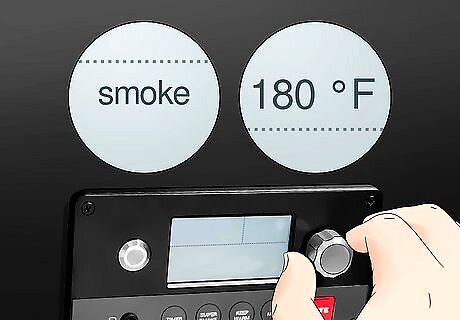
Turn the temperature dial to the “Smoke” option. Look for a small temperature knob located on your grill’s control panel. Then, turn the knob to the setting labeled “Smoke.” If your unit does not have a smoke option, set the temperature to between 160 °F (71 °C) and 200 °F (93 °C).
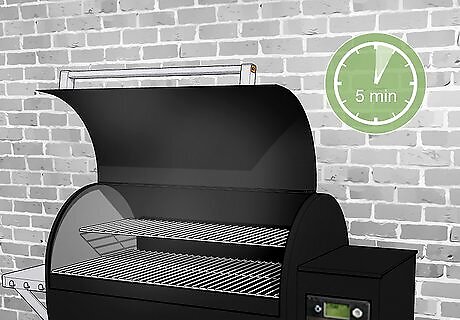
Let the grill sit for about 5 minutes. For most Traeger products, your grill will need between 4 and 5 minutes to preheat properly. If your grill comes equipped with Advanced Grilling Logic, it may take a minute or 2 less. During this time, watch the grill to make sure it starts up properly and doesn’t run into any technical issues. For brand new units, add an extra 2 to 3 minutes to the preheating section. This will give the grill’s auger time to move your wood pellets to the fire box.
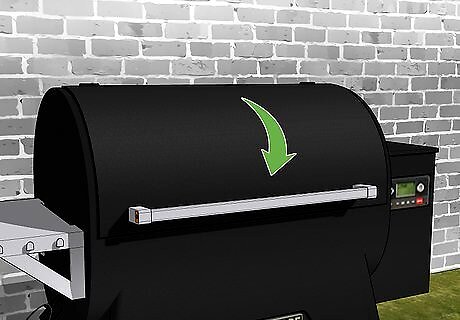
Close the lid when the grill starts to roar. Once the grill finishes preheating, you’ll hear a loud, roaring noise emanate from the unit’s main body. This sound typically resembles the engine on a jet or a gale of wind. When you hear the noise, close the grill’s lid to pack in heat and smoke until you’re ready to cook.
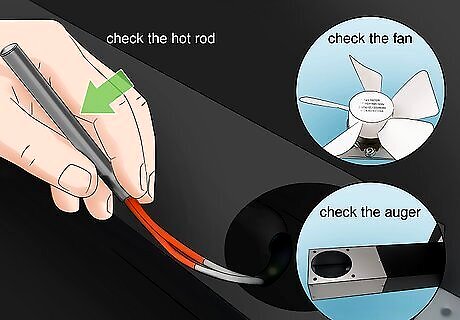
Check your grill’s hotrod, fan, and auger if it won’t start up. If your grill does not heat up or start to roar, there may be a problem with 1 of the component parts. Check your grill’s hotrod, fan, and auger to see if there is any debris or dust clogging everything up. If there is, clean out the area and try running your grill again. If it still doesn’t turn on, visit Traeger’s official FAQ webpage for support. Look for your grill’s hotrod below the grill grate, drip tray, and heat baffle. You can find your grill’s fan and auger underneath the hopper.
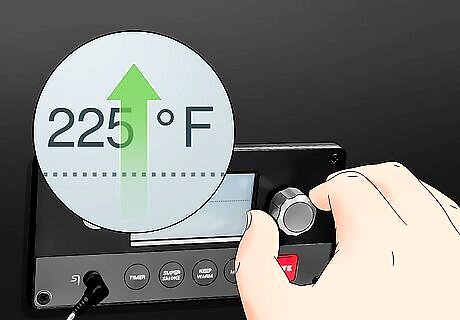
Turn the temperature dial to your desired cooking level. With the grill preheated, you’re free to change the unit’s temperature knob from the smoke setting to whatever cooking level you desire. Before putting any food on the grill, check the heat gauge above the unit’s temperature knob to see if the chamber is hot enough. Traeger grills use numeric temperature levels and do not contain preset options for grilling, roasting, braising, and the like.
Shutting the Grill Down
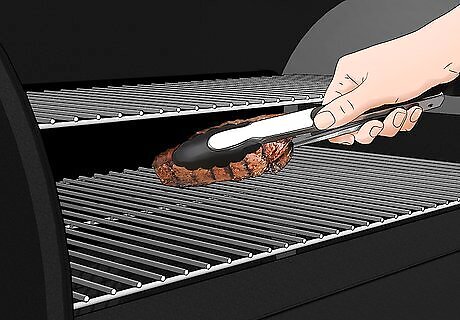
Take any remaining food off the grill. Leaving food on your grill grates may cause unwanted grime buildup or rust, things you’ll have to clean off before you can cook again. To avoid this, take any food off your grill before you shut it down. If any food remains stuck on the grill grates, clean it off after the unit cools down.
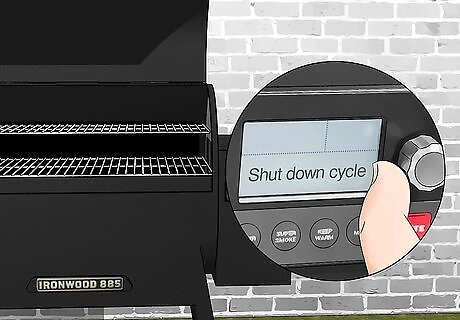
Set the temperature dial to the “Shut Down Cycle” option. Instead of a low temperature option, Traeger units come with a “shut down cycle” setting that helps the unit turn off properly. To avoid damaging your grill, do not turn it off without first running the unit through a shut down cycle.

Close the grill’s lid and let the unit sit for about 10 minutes. After activating the shut down cycle, close your grill’s lid and let it power down on its own. After about 10 minutes, your grill should automatically shut off. Even after the unit turns off, be cautious around the grill grates in case any residual heat remains.
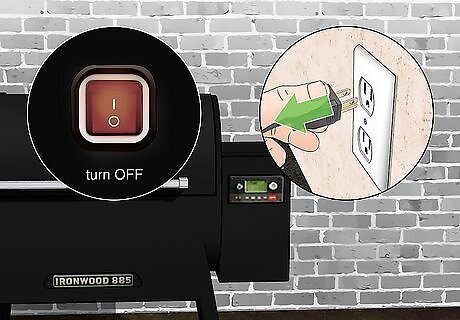
Toggle the power switch and unplug the grill. Once the grill shuts down, make sure to toggle the unit’s power switch to the “Off” position. Then, unplug the unit from the wall to avoid accidentally turning it back on.

Clean the grill once it cools down. After each use, you should wipe down the grill grates with a fresh rag. About once a year, you should also clean up the grill’s smoke stack, grease drip pan, heat baffle, and main body.




















Comments
0 comment